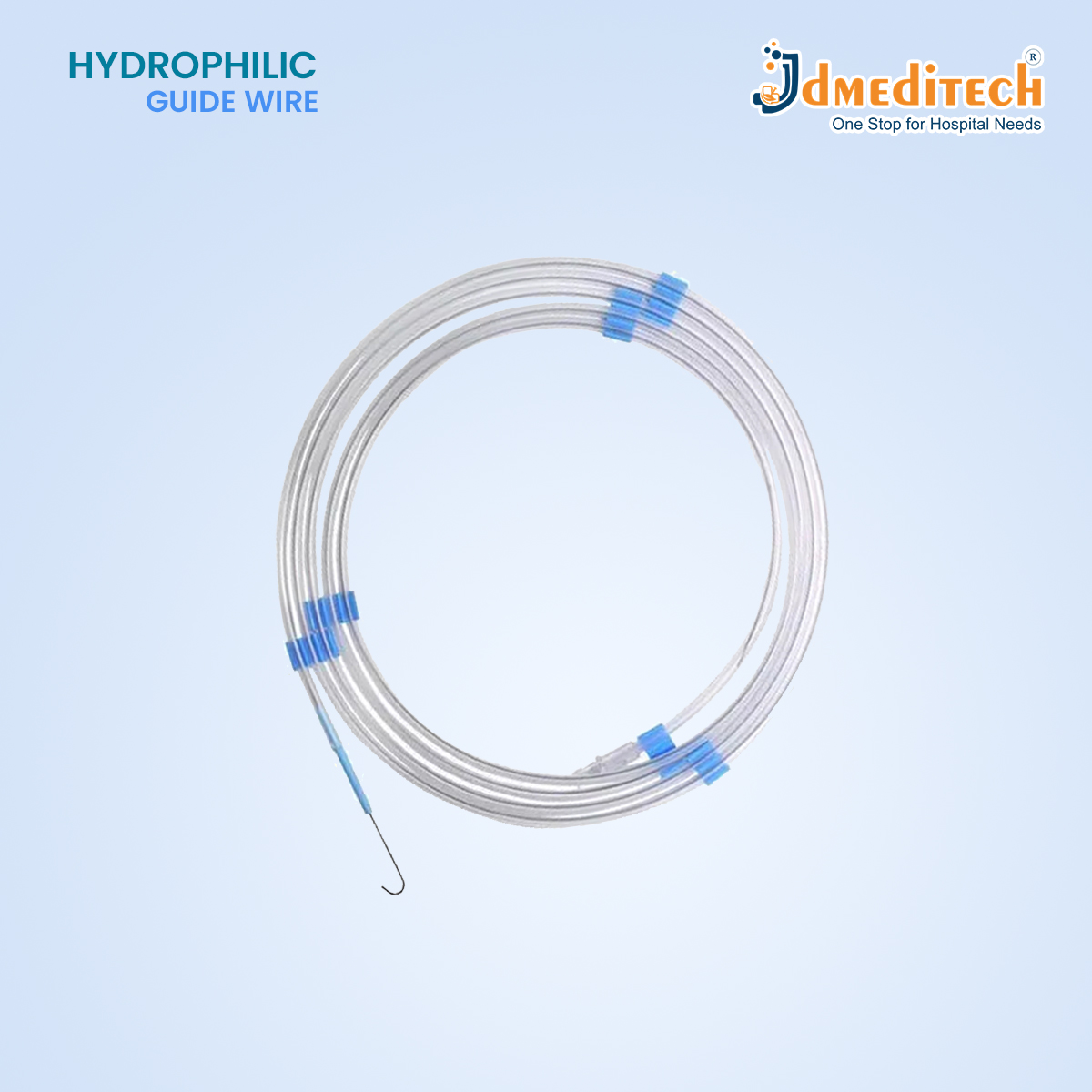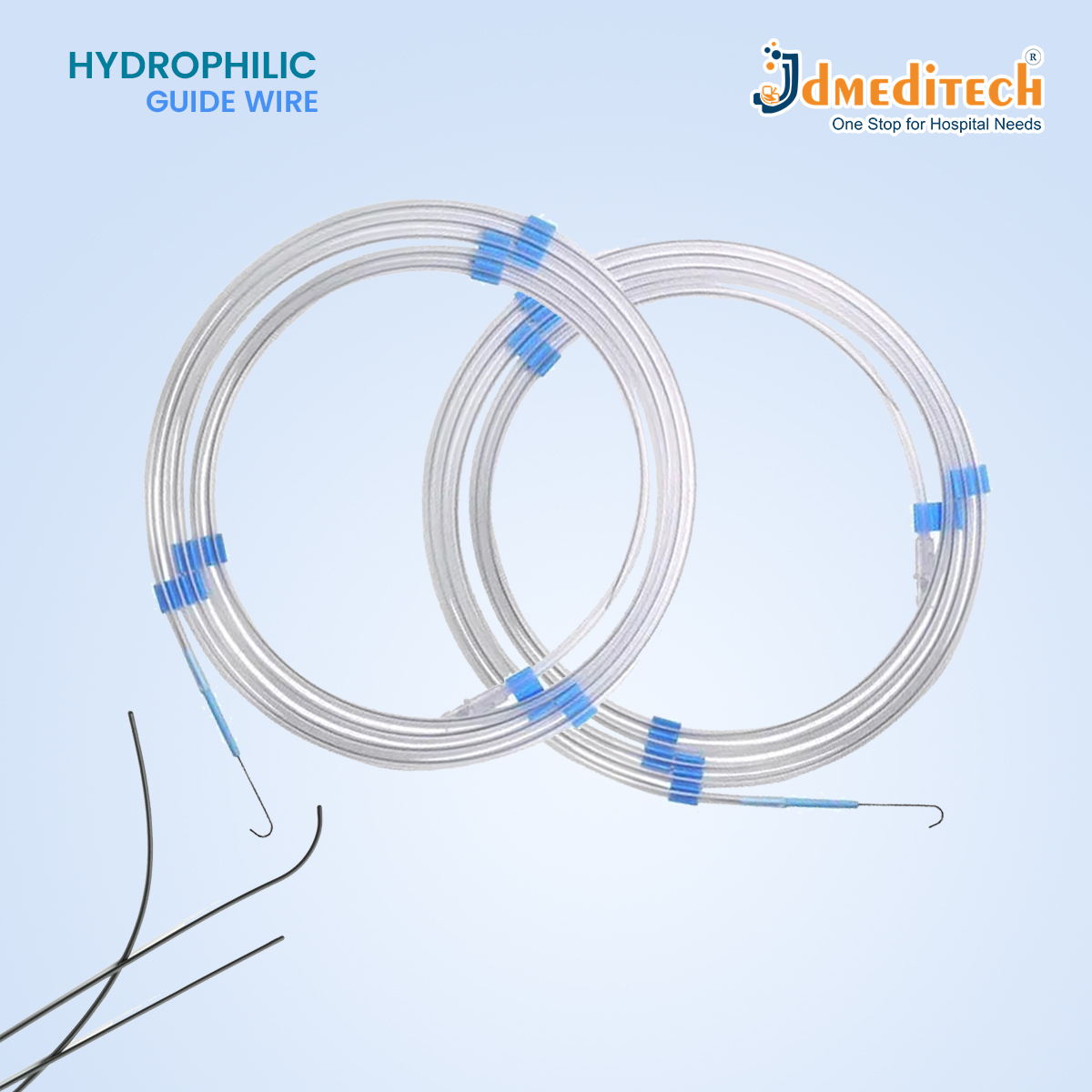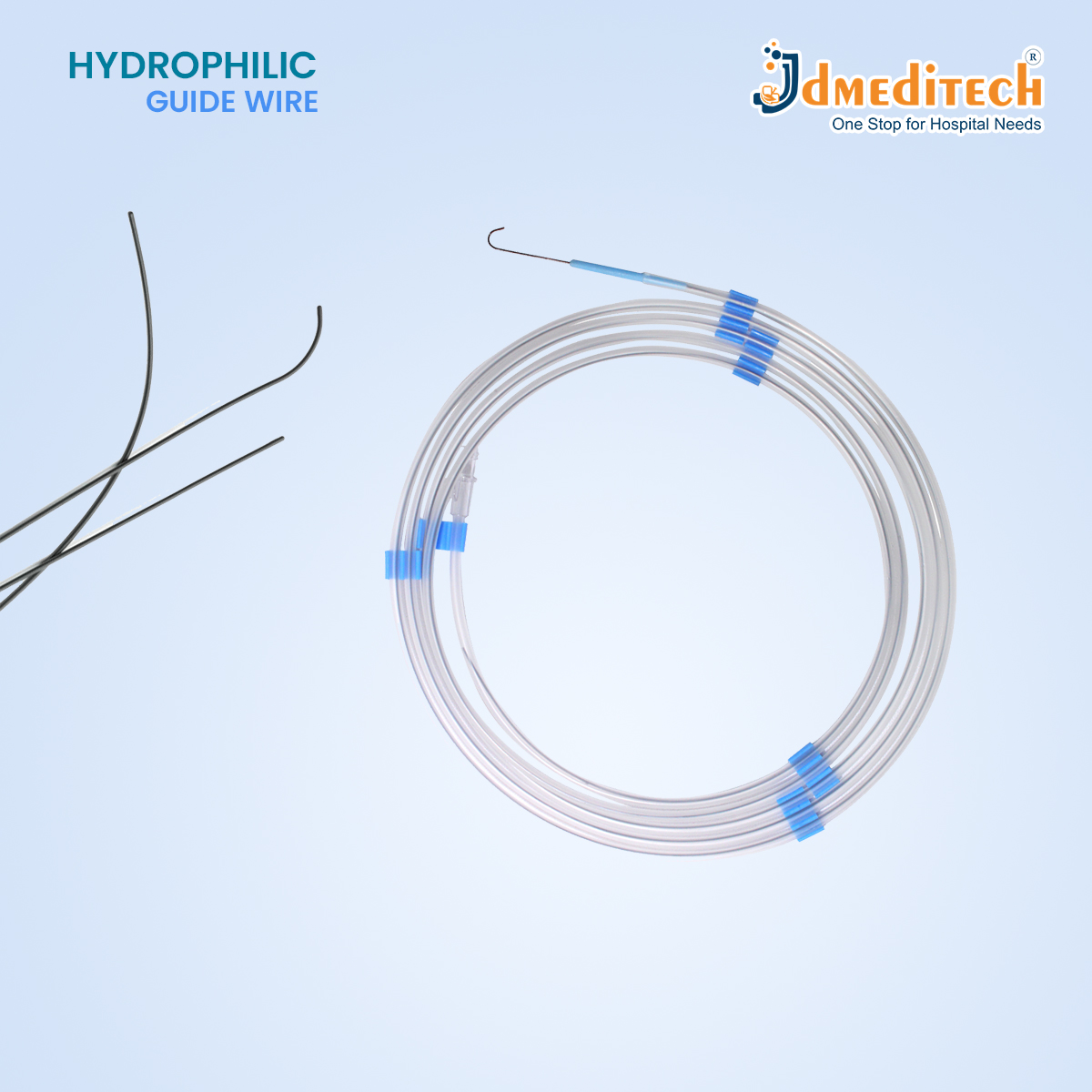






JDmeditech is a manufacturing and exporting company, certified to the International Quality Standard, based in Ahmedabad, Gujarat, India. For hydrophilic guidewires, it is a specialized medical wire coated with a hydrophilic (water-attracting) polymer that becomes very slippery when wet. It is used to guide catheters or other instruments safely through narrow, curved, or challenging pathways in the body during procedures such as angioplasty, urology, or endoscopic surgeries.
Key Features of a Hydrophilic Guidewire:
Hydrophilic Coating – Becomes super-slippery when wet, reducing friction and making navigation easier.
Flexibility – Easily bends through twisted or narrow anatomical passages.
Atraumatic Tip – Soft, tapered tip minimizes tissue injury and ensures gentle passage.
Radiopacity – Often contains radiopaque markers so it’s visible under X-ray or fluoroscopy.
Excellent Trackability – Follows the path of least resistance, ideal for tight spaces.
Disposable – Usually single-use to ensure sterility and performance.
Common Uses:
Urology: Navigating the ureters for stent or catheter placement.
Cardiology: During angioplasty to cross blockages in blood vessels.
Gastroenterology: For accessing the bile or pancreatic ducts (e.g. ERCP).
Interventional Radiology: To assist in vascular access or drainage procedures.